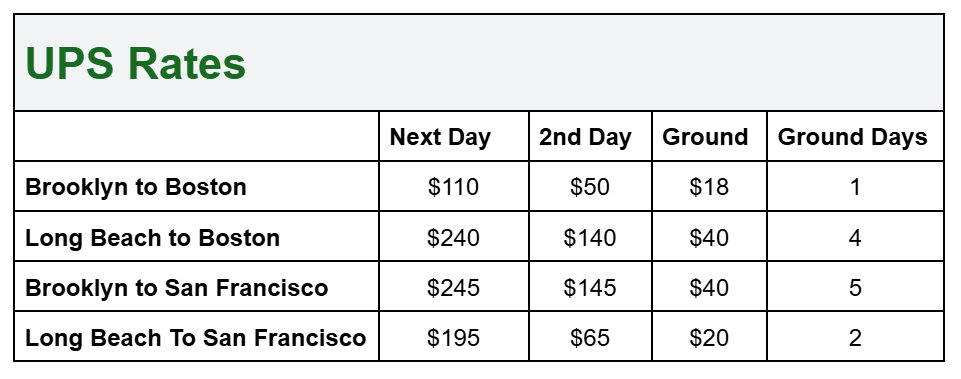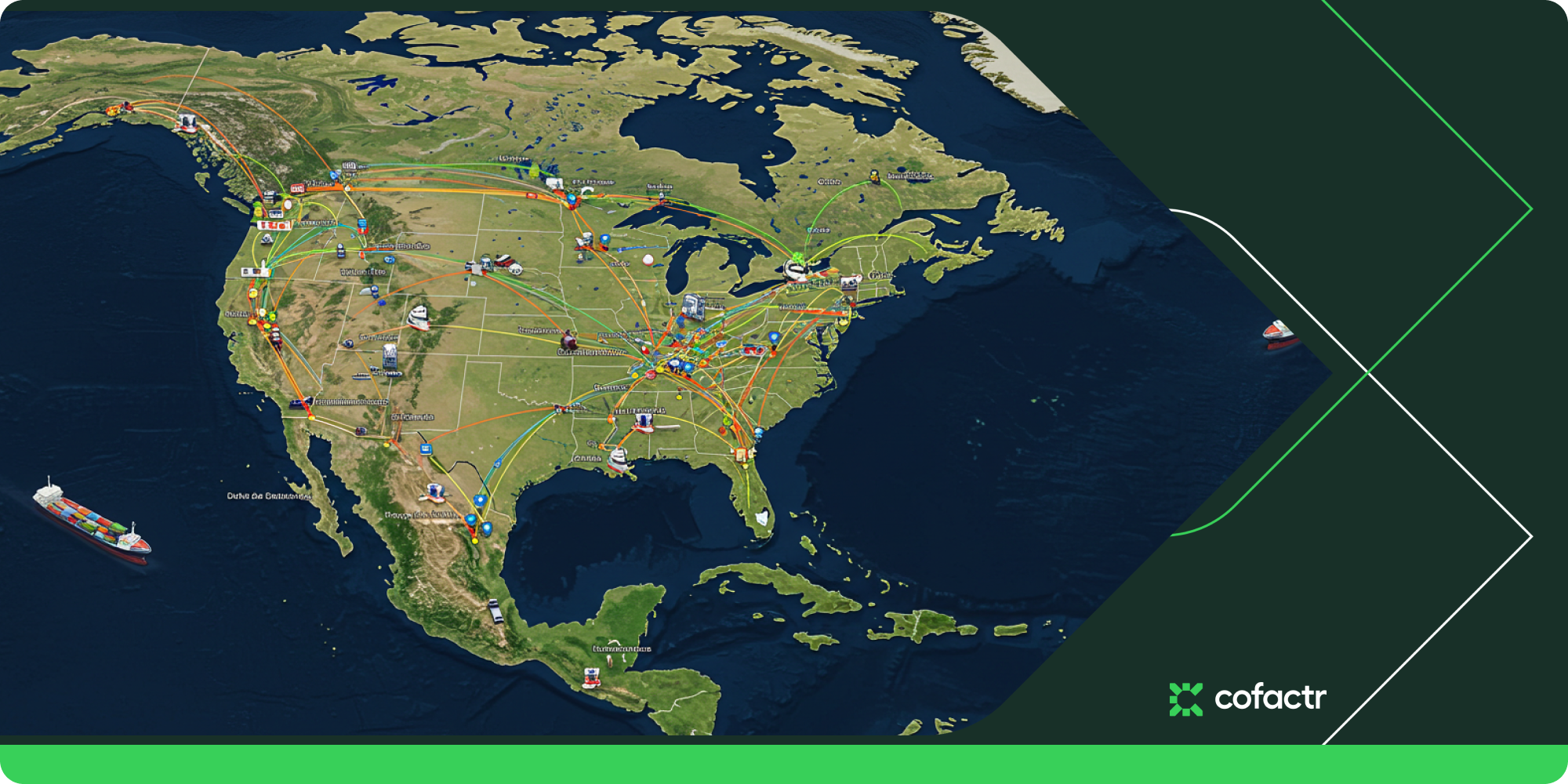Table of contents
Picking a 3PL on the wrong coast might drain your budget without you knowing it. For companies expecting 2-day delivery as standard, the physical location of your logistics partner can drive dramatic cost differences, up to 7x per shipment..
Here we compare FedEx and UPS rates for the same box shipped from a 3PL location to a contract manufacturer (CM) location on opposite coasts and explains why most teams don’t even see these cost spikes coming.
Read More: How Pairing your EMS with a Logistic Provider Unlocks Growth
Methodology
We looked up rates for a 2lb box with standard dimensions using the UPS Time & Cost Calculator and FedEx Rate Tools. FedEx was a bit more expensive, so for simplicity we will analyze just the UPS rates rounded to the nearest whole number.

The $140 Box: A Simple Shipping Scenario
Here’s the setup. Look at that standard 2 lb box with typical dimensions sent using 2-day delivery.
- From Brooklyn, NY to Boston, MA: $18
- From Brooklyn, NY to San Francisco, CA: $140
Same box. Same service level. A sevenfold cost increase because of origin location.
Shipping the same box from Long Beach, CA flips the pattern: low-cost to the West Coast, expensive to the East.
- From Long Beach, CA to Boston, MA: $20
- From Long Beach, CA to San Francisco, CA: $145
These are real numbers. Yet unless you have access to freight bills and the time to analyze them you'd miss the signal.
Why Most Companies Miss Shipping Costs
Shipping Is Often Buried in Overhead
Inbound freight (and transfers) are supposed to be included in cost-of-goods-sold, which also means freight costs are supposed to be included in inventory. Outbound freight is supposed to be included in cost-of-sales. This can be a real pain, so often accounting systems lump all shipping together and record it as an expense to operating overhead. This means costs aren't traceable to SKUs. It also means shipping to California looks the same as Connecticut. One result is shipping costs are often not considered when selecting a 3PL partner because the operations team lacks data.
P&Ls Can Obscure the Details
When freight is not properly accounted for it’s very difficult to break out:
- Inbound vs. outbound freight
- Ground vs. expedited services
Finance might access this data through carrier portals or billing statements, but ops and supply chain usually can’t. That separation creates blind spots, especially when evaluating the geographic fit of your 3PL.
Inbound Freight Is All Over the Map
Even when properly accounted for, inbound shipping charges from distributors differ widely:
- DigiKey charges flat shipping no matter where you are.
- Most distributors ship from multiple warehouses
- You might negotiate freight included terms, but only with 1 or 2 distributors.
This makes inbound costs hard to compare, but in general geography is not likely the main factor for inbound freight costs (unless you do a lot of overnight shipping). Transfers (like from 3PL to CM) by contrast, are fully under your control, and ripe for optimization.
Why 3PL Location Matters More Than You Think
3PL geography directly affects your cost structure:
- East Coast 3PLs are efficient for East Coast delivery.
- West Coast 3PLs do the same for the West.
If your contract manufacturers are regionally fixed, your 3PL should be nearby. Otherwise you’re paying to move inventory cross-country before it even reaches your customers.
Too many companies choose a sub-optimal 3PL without fully considering the costs, and quietly accept the penalty.
Read More: Streamline Your Electronic Component Logistics
What Actually Works: Regional Flexibility
Here’s how to fix the problem.
Have Both Coasts Available
Select a 3PL with support on both coasts. Use one location, or use multiple locations. This gives you the flexibility to select, change, or add CMs without concerns about geographic location.
Disaster Recovery
If you actively use two or more 3PL locations you will have built in disaster recovery, at least for your raw goods. Even if you only use one location, switching to the other location if disaster strikes will be far easier than trying to find a new 3PL during a crisis.
Route Orders Intelligently
If you do use multiple locations, don't default to the closest warehouse with stock, especially for low value items like capacitors and resistors. Factor in destination, rate, and shipping costs. Most modern inventory management tools support this if configured properly.
Balance Inventory vs. Shipping Spend vs. Supply Chain Resilience
Managing two or more 3PL locations adds some complexity if you really need to emphasize redundancy and supply chain resilience. You’ll hold more inventory overall. But for businesses where delivery and continuity are critical, the shipping savings often offset the operational overhead.
Read More: Cofactr is Expanding West: New California Warehouse
What to Do Next
Start here:
- Audit outbound shipments. Break down a recent month by region. Hint: drop the pdf of your bill into ChatGPT and have it do the analysis for you.
- Request a zone-level shipping cost report from your 3PL. If they can't provide it, that’s a red flag.
- Revisit your P&L setup. Give your ops team visibility into shipping costs, both inbound and outbound. If they haven’t done it already, accounting won’t like it, they are busy too. But trust me it’s not that hard to do.
A $140 shipping charge for a $20 box should never be a surprise. And it shouldn't be your norm.
Want to make this easy? Schedule a free, no obligation Cofactr demo to see how we can help you automate price evaluation, component swaps, and much more.




